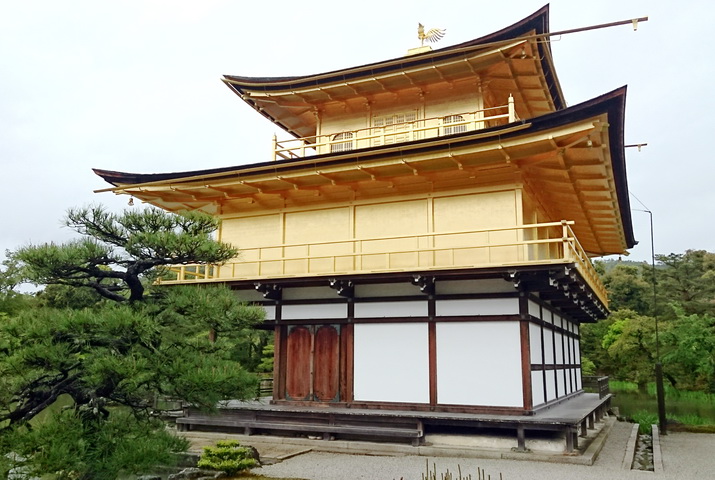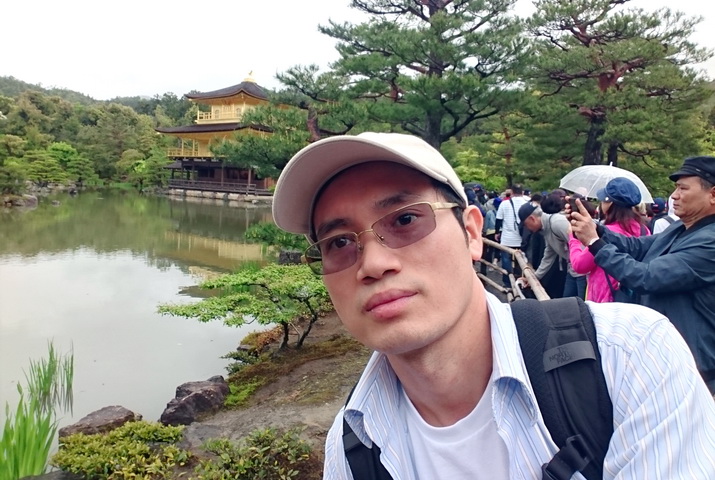Kinkakuji is a Zen temple in northern Kyoto whose top two floors are completely covered with gold leaf. Formally known as Rokuonji, the temple was a holiday villa of Shogun Ashikaga Yoshimitsu, and, at his will, it became a Zen temple of the Rinzai sect after his death in 1408.
Kinkakuji is an impressive structure built overlooking a large pond and is the only remaining building of Yoshimitsu's former retirement area. It was struck by fire many times throughout its history, including twice during the Onin War, a civil war that destroyed much of Kyoto and again more recently in 1950 when it was burned. by a fanatic monk. The current structure of the temple was rebuilt in 1955.

Kinkakuji was built to echo the extravagant Kitayama culture that developed among the wealthy nobles in Kyoto during Yoshimitsu's time. Each floor represents a different architectural style.
The first floor was built in the Shinden style that was used for palace buildings during the Heian Period, and with natural wooden pillars and white plaster walls contrasting but still harmonizing with the side architecture. on the gilding of the temple. Shakyamuni and Yoshimitsu Buddha statues are stored on the first floor. Although it is impossible to get inside, the statues can be viewed from across the pond if you notice, because the front windows of the first floor are often open.

The second floor is built in the Bukke style used in Samurai buildings and the exterior is completely covered with gold leaf. Inside was a sitting Bodhisattva Kannon, surrounded by statues of the Four Great Kings, but visitors could not see them. Finally, the third and top floor are built in the style of Chinese Zen Zen, gilded from the inside out and on the roof there is a golden phoenix.
With unique architecture combined with Japanese garden, this place is a top destination when traveling to Kyoto.